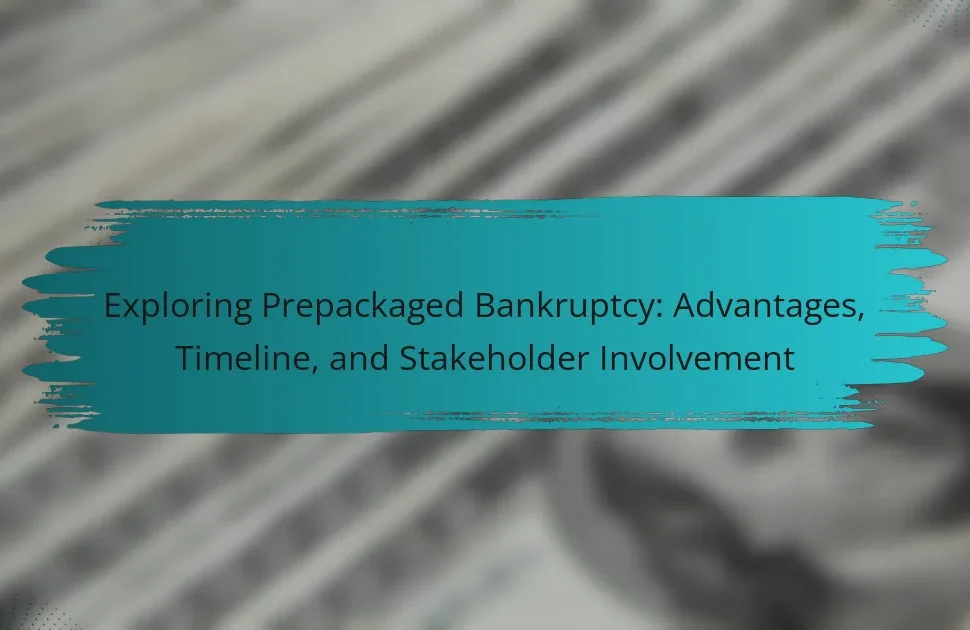Distressed asset acquisitions refer to the purchase of underperforming or financially troubled assets, which can include real estate, companies, or financial instruments. Investors are attracted to these assets due to the potential for significant returns after rehabilitation, often acquired at lower prices. The article explores the opportunities presented by distressed assets, such as acquiring undervalued properties and implementing turnaround strategies to enhance profitability. It also addresses the associated risks, including uncertainty in asset value, operational challenges, legal complications, and market conditions. Understanding these dynamics is essential for investors looking to navigate the distressed asset landscape effectively.

What are Distressed Asset Acquisitions?
Distressed asset acquisitions involve purchasing assets that are underperforming or in financial distress. These assets may include real estate, companies, or financial instruments. Investors often seek these acquisitions at a lower price due to the associated risks. The goal is to rehabilitate the asset and realize a profit. Distressed asset acquisitions can provide significant returns if managed effectively. According to the Harvard Business Review, strategic investment in distressed assets can yield high returns when market conditions improve.
Why are Distressed Assets Significant in Today’s Market?
Distressed assets are significant in today’s market due to their potential for high returns. Investors seek these assets during economic downturns or company-specific challenges. They can often be acquired at a discount, allowing for potential profit when the market stabilizes. For instance, during the 2008 financial crisis, distressed asset investments yielded returns averaging 20-30% as markets recovered. Additionally, these assets can provide diversification in an investment portfolio. The increased volatility in markets makes distressed assets appealing for opportunistic investors. Overall, the combination of lower purchase prices and recovery potential makes distressed assets a focal point for strategic investment.
What factors contribute to an asset becoming distressed?
An asset becomes distressed due to various factors including financial mismanagement, market downturns, and operational inefficiencies. Financial mismanagement often leads to excessive debt and cash flow problems. Market downturns can decrease asset value significantly, impacting liquidity. Operational inefficiencies may result in increased costs and reduced profitability. Additionally, legal issues or regulatory changes can contribute to an asset’s distress. These factors can create a cycle of decline, making recovery challenging. For example, during the 2008 financial crisis, many assets became distressed due to widespread market declines and poor financial practices.
How do market conditions influence distressed asset valuations?
Market conditions significantly influence distressed asset valuations by affecting supply, demand, and investor sentiment. In a strong economy, demand for distressed assets may increase, leading to higher valuations. Conversely, during economic downturns, supply may exceed demand, resulting in lower valuations. Factors such as interest rates, inflation, and market liquidity also play crucial roles. For example, low interest rates can encourage more investment in distressed assets, increasing their value. Historical data shows that during the 2008 financial crisis, distressed asset prices dropped significantly due to adverse market conditions. Thus, market conditions directly impact the perceived value of distressed assets.
What types of Distressed Assets can be acquired?
Distressed assets can include real estate, corporate bonds, and equity shares. Real estate distressed assets often arise from foreclosures or short sales. Corporate bonds may be available from companies facing bankruptcy or financial difficulties. Equity shares can be acquired from companies with declining stock prices due to operational challenges. Additionally, distressed loans and receivables can be purchased at a discount. Each type presents unique investment opportunities and risks.
What are the common categories of distressed assets?
Common categories of distressed assets include real estate, corporate bonds, and non-performing loans. Real estate distressed assets often arise from foreclosures or market downturns. Corporate bonds may become distressed due to the issuing company’s financial difficulties. Non-performing loans are loans in default or close to default. Each category represents opportunities for investors seeking undervalued assets. Distressed assets typically trade at significant discounts, presenting potential for high returns.
How do different asset types present unique acquisition opportunities?
Different asset types present unique acquisition opportunities through varying risk profiles and potential returns. Real estate assets often yield substantial returns due to appreciation and rental income. Distressed properties can be acquired below market value, allowing for significant profit margins upon renovation or resale. Financial assets, such as stocks, can be purchased at discounts during market downturns, enabling high returns when markets recover. Tangible assets like machinery or equipment can provide immediate operational benefits and cash flow. Each asset type’s market dynamics influence the acquisition strategy, often requiring tailored approaches to maximize value. For instance, distressed commercial real estate may offer tax incentives, enhancing overall investment appeal.

What Opportunities Exist in Distressed Asset Acquisitions?
Distressed asset acquisitions present several opportunities for investors. These opportunities include acquiring assets at significantly reduced prices. Investors can capitalize on undervalued properties, companies, or financial instruments. The potential for high returns exists as these assets can appreciate in value post-acquisition.
Additionally, distressed assets may offer unique investment strategies. Investors can implement turnaround strategies to restore profitability. This approach can lead to substantial gains once the asset’s value is enhanced.
Market demand for distressed assets can create competitive bidding situations. This can further drive down purchase prices, increasing potential profit margins. Historical data shows that savvy investors often achieve returns exceeding 20% on such acquisitions.
Overall, distressed asset acquisitions can provide lucrative opportunities for those willing to navigate the associated risks.
How can investors benefit from acquiring distressed assets?
Investors can benefit from acquiring distressed assets by purchasing them at significantly reduced prices. This allows for the potential of high returns when the assets are restructured or improved. Distressed assets often come with less competition, making it easier for investors to negotiate favorable terms. Additionally, investors can leverage their expertise to enhance the value of these assets. Historical data shows that distressed assets can yield returns exceeding 20% when properly managed. The potential for appreciation is substantial as market conditions improve. Therefore, acquiring distressed assets presents a strategic opportunity for investors seeking high rewards.
What potential returns can be expected from distressed asset investments?
Distressed asset investments can yield high potential returns, often exceeding standard market returns. These assets are typically purchased at a significant discount due to financial distress. Investors can realize gains through strategic management and operational improvements. Historical data shows that distressed assets can appreciate by 20% to 50% post-acquisition. Successful turnaround strategies have been documented in various case studies, demonstrating effective value recovery. Additionally, the potential for high returns is amplified in sectors experiencing economic recovery. Overall, distressed asset investments present an opportunity for substantial financial gain when approached with a calculated strategy.
What strategic advantages do distressed acquisitions provide?
Distressed acquisitions provide strategic advantages such as lower purchase prices and potential for high returns. Investors can acquire assets at significant discounts, often 30-70% below market value. This creates immediate value upon acquisition. Additionally, these acquisitions can lead to increased market share and competitive positioning. By revitalizing distressed companies, investors can tap into new revenue streams. The potential for operational improvements can further enhance profitability. Historical examples, like the acquisition of Chrysler by Cerberus Capital Management, demonstrate successful turnarounds. These factors collectively contribute to the appeal of distressed acquisitions in investment strategies.
What are the key market trends influencing distressed asset opportunities?
Key market trends influencing distressed asset opportunities include economic uncertainty, rising interest rates, and increased regulatory scrutiny. Economic uncertainty drives businesses to restructure, resulting in distressed assets. Rising interest rates increase borrowing costs, leading to financial strain on companies. Increased regulatory scrutiny can expose weaknesses in companies, prompting asset sales. Additionally, technological advancements create opportunities for new entrants in distressed markets. These trends collectively shape the landscape for distressed asset acquisitions, presenting both challenges and opportunities for investors.
How do economic cycles affect the availability of distressed assets?
Economic cycles significantly influence the availability of distressed assets. During economic downturns, businesses often face financial difficulties, leading to an increase in distressed assets. For instance, the 2008 financial crisis resulted in a surge of distressed properties and companies, as many could not meet their obligations. Conversely, in periods of economic growth, the availability of distressed assets typically decreases. This is because companies are more likely to perform well, reducing the likelihood of financial distress. Data from the Federal Reserve indicates that distressed asset sales peak during recessionary periods. The correlation between economic cycles and distressed assets is well-documented, showing that asset availability is inversely related to economic stability.
What role does regulatory change play in distressed asset markets?
Regulatory change significantly impacts distressed asset markets by altering the legal and financial landscape. Changes in regulations can affect the valuation of distressed assets. For instance, new laws may introduce tax incentives for asset acquisition or impose stricter compliance requirements.
Such shifts can influence investor confidence and market liquidity. Regulatory changes can either encourage investment or deter it based on perceived risks. Historical examples include the Dodd-Frank Act, which reshaped the financial sector post-2008, impacting distressed asset valuations.
Increased transparency from regulatory reforms can enhance market efficiency. Conversely, overly stringent regulations may restrict access to capital for distressed firms. Overall, regulatory change plays a critical role in shaping the dynamics of distressed asset markets.

What Risks Should Investors Consider in Distressed Asset Acquisitions?
Investors should consider several risks in distressed asset acquisitions. The primary risk is the uncertainty of asset value. Distressed assets may have hidden liabilities that can significantly affect their worth. Another risk is the potential for operational challenges. Many distressed assets require significant management turnaround efforts. Legal complications can also arise, especially if the asset is tied to bankruptcy proceedings. Additionally, market conditions can impact the success of the acquisition. A downturn in the economy can further diminish asset value. Investors must also be wary of competition from other buyers seeking the same assets. All these factors contribute to the overall risk profile of distressed asset acquisitions.
What are the common risks associated with distressed asset investments?
Common risks associated with distressed asset investments include financial instability, legal complications, and market volatility. Financial instability arises from the underlying issues of the distressed asset, which may lead to unpredictable cash flows. Legal complications can occur due to existing liabilities or litigation linked to the asset. Market volatility affects the value of distressed assets, making it challenging to predict future performance. Additionally, operational risks may arise from mismanagement or lack of resources in the distressed entity. Investors must also consider the risk of inadequate due diligence, which can lead to unforeseen issues post-acquisition.
How can legal and financial complications arise in distressed acquisitions?
Legal and financial complications can arise in distressed acquisitions due to various factors. These complications often stem from existing liabilities that the distressed entity carries. Buyers may inherit debts, pending lawsuits, or regulatory issues. Legal disputes can arise from creditor claims during the acquisition process. Financial complications may include unexpected costs related to restructuring or compliance with legal requirements.
The due diligence process can uncover hidden liabilities that complicate the acquisition. For example, undisclosed environmental liabilities can lead to significant financial repercussions. Additionally, changes in market conditions can impact the valuation of the distressed asset.
In some cases, the acquisition may be challenged in court by stakeholders. This can delay the process and incur additional legal fees. Overall, careful assessment and legal guidance are essential to navigate these complexities effectively.
What are the risks of overvaluation in distressed asset purchases?
Overvaluation in distressed asset purchases poses significant financial risks. Investors may pay more than the true market value of the asset. This can lead to substantial losses if the asset fails to generate expected returns. The misjudgment of an asset’s potential can result in poor investment performance. Additionally, overvaluation can limit liquidity options in the future. If the asset needs to be sold, it may not attract buyers at the inflated price. Historical data shows that many distressed asset purchases fail due to overvaluation, leading to bankruptcy for investors. Accurate valuation is critical to mitigate these risks and ensure informed decision-making.
How can investors mitigate risks in distressed asset acquisitions?
Investors can mitigate risks in distressed asset acquisitions by conducting thorough due diligence. This includes assessing the financial health of the asset and understanding its market position. Investors should analyze historical performance data and identify potential legal liabilities. Engaging industry experts can provide insights into the asset’s value and future prospects. Diversifying the investment portfolio can also reduce exposure to any single distressed asset. Establishing clear exit strategies is essential for minimizing losses. Investors should remain flexible and adaptable to changing market conditions. Utilizing financial modeling can help forecast potential outcomes and risks associated with the acquisition.
What due diligence practices are essential for successful acquisitions?
Essential due diligence practices for successful acquisitions include financial analysis, legal review, operational assessment, and market evaluation. Financial analysis involves scrutinizing financial statements and cash flow projections. This helps identify the target’s financial health. Legal review examines contracts, compliance issues, and potential liabilities. This ensures that there are no hidden legal risks. Operational assessment evaluates the target’s business processes and management capabilities. This identifies operational efficiencies or deficiencies. Market evaluation analyzes industry trends and competitive positioning. This helps in understanding the target’s market potential. Each of these practices is crucial for making informed decisions and mitigating risks during acquisitions.
How can investors develop a risk management strategy for distressed assets?
Investors can develop a risk management strategy for distressed assets by conducting thorough due diligence. This involves assessing the financial health of the asset and understanding its market position. Investors should analyze historical performance data and current valuation metrics. Identifying potential legal issues is also crucial.
Diversification across different asset types can mitigate risks. Investors should establish clear investment criteria to guide their decisions. Implementing a contingency plan for unexpected scenarios can further protect investments.
Regular monitoring of the asset’s performance is essential. Adjusting strategies based on market changes will enhance risk management.
What lessons can be learned from past distressed asset acquisitions?
Past distressed asset acquisitions highlight several key lessons. Thorough due diligence is essential before acquiring distressed assets. Understanding the underlying issues can prevent costly mistakes. Historical data shows that many failed acquisitions stemmed from inadequate assessments. Strategic planning is crucial for post-acquisition integration. Successful investors often have a clear vision for turnaround strategies. Market conditions can significantly impact the success of these acquisitions. For instance, the 2008 financial crisis revealed that timing is critical. Investors who acted swiftly during downturns often capitalized on lower valuations.
What case studies illustrate successful and unsuccessful distressed acquisitions?
Successful distressed acquisitions include the case of Chrysler’s acquisition by Fiat in 2009. Fiat invested in Chrysler during its bankruptcy, leading to a profitable turnaround. The partnership resulted in Fiat gaining a foothold in the North American market.
An example of an unsuccessful distressed acquisition is the purchase of Lehman Brothers’ assets by Barclays in 2008. Barclays faced significant challenges integrating Lehman’s operations. The acquisition ultimately did not yield the expected synergies and profitability.
These case studies highlight the varying outcomes of distressed acquisitions based on strategic execution and market conditions.
How can historical data inform future investment strategies?
Historical data can inform future investment strategies by revealing trends and patterns in market behavior. Analyzing past performance helps investors identify which assets have historically yielded the best returns. For example, data from the 2008 financial crisis showed that distressed assets often rebounded significantly over time. This historical insight can guide investors in timing their acquisitions. Additionally, historical data can highlight sectors that are cyclical and those that are more resilient during downturns. By understanding these dynamics, investors can make informed decisions about risk management. Statistical analyses often show correlations between past economic indicators and future market movements. This reinforces the value of utilizing historical data in strategic planning for investments.
What are the best practices for successful distressed asset acquisitions?
Successful distressed asset acquisitions require thorough due diligence. This involves evaluating the financial health and operational capabilities of the asset. Buyers should assess market conditions and the asset’s potential for recovery. Engaging experienced advisors can provide valuable insights into the acquisition process. Establishing a clear investment strategy is crucial for aligning goals with the asset’s potential. Additionally, understanding legal implications and liabilities is essential to avoid future complications. Finally, having a solid post-acquisition plan ensures effective management and maximizes the asset’s value. These practices increase the likelihood of a successful acquisition and long-term profitability.
Distressed asset acquisitions involve purchasing underperforming or financially troubled assets, such as real estate or companies, at reduced prices to rehabilitate and profit from them. The article explores the significance of distressed assets in today’s market, the factors leading to their distress, and the types available for acquisition. It also addresses the potential returns and strategic advantages of investing in distressed assets, along with associated risks and best practices for successful acquisitions. Key insights include the impact of market conditions on valuations and the importance of thorough due diligence in mitigating risks.




